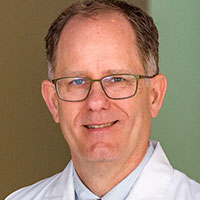New Patient Appointment or 214-645-8300

Timothy Booth, M.D. Answers Questions On: Pediatric Neuroradiology
-
What do you and your colleagues do to ensure the safety of children who undergo imaging of the brain and spine?
-
Our program at Children’s Health in Dallas is certified by the American College of Radiology in both MRI and CT imaging. That signifies, among other things, that we’re very careful with issues such as the radiation doses we use in CT scanning.
Because any CT imaging comes with the risk of radiation exposure, we do MRIs when at all possible in order to eliminate exposing children to radiation.
For example, while some centers use CT imaging to evaluate patients for sensorineural hearing loss, we use MRI. It not only avoids exposing children to radiation, it gives us a lot more information about the inner-ear structures and the nerves that are important for hearing.
When I arrived at UT Southwestern, I led the effort to use MRI whenever possible when assessing hearing loss in children. I think that’s made a huge difference in evaluating these patients for – and helping the otolaryngologists manage – hearing loss, which is a very difficult thing to be forced upon a child.
We also use some rapid MRI techniques to alleviate radiation exposure. This can be particularly helpful in imaging our many patients who have shunts that drain the cerebrospinal fluid from their brains.
In addition, we use MRI-specific protocols based on age and the need for sedation, typically in children younger than 8 years old.
When we do use CT scanning – which is a great technology for things like trauma and temporal bone imaging – we use very low doses that still produce diagnostic-quality images.
-
What does your team do to address the unique challenges of imaging children?
-
The big issue with imaging children – whether they’re newborns or 2-year-olds or 10-year-olds – is that they have to be still in order for us to get good images and make good diagnoses. We don’t want to have to repeat a study because it couldn’t be performed correctly the first time. Our team, which includes MRI and CT technologists, is well-versed in obtaining high-quality images in this unique patient population. Our physicians and imaging technologists spend a lot of time working with children to try to prevent movement and avoid using anesthesia – sometimes patiently trying and trying again.
If that doesn’t work, our skilled pediatric anesthesiologists safely sedate the child long enough for us to get the images we need.